M1A2 Abrams Main Battle Tank: Everything You Need to Know

- Most notable of these improvements is the addition of the Inter-Vehicle Information System (IVIS.) The IVIS system allows for the automatic and continual exchange of information between vehicles.
- The SEPv2 (version 2) has a weapon station that can be controlled from a distance and is armed with a 12.7 mm machine gun. In 1999, the US Army got its first M1A2 SEP tank.
The M1A1 main battle tank was improved with the M1A2 Abrams. It is one of the best MBTs on the market right now. In 1988, work started on making M1A1 better.
The US army got between 1,200 and 1,500 M1A2 main battle tanks. Out of these, about 1,000 M1 main battle tanks that were getting old were updated to the M1A2 standard. The plan is that this tank will still be used after 2050. The M1A2 has been sent to Saudi Arabia (218) and Kuwait (218). (457).
Chobham composite armour is used to protect the Abrams. Depleted uranium mesh was added to the front of the hull and turret of the M1A2 to make it safer. It offers good protection against all known anti-tank weapons, but it is heavier overall than the M1A1.
The M1A2 Abrams is thought to have one of the best ways to protect itself in the world. All of the M1A1 tanks that are still in use have had depleted uranium armour added to them. The M1A2 tanks that went to Kuwait and maybe Saudi Arabia don’t have depleted uranium layers in their armour.
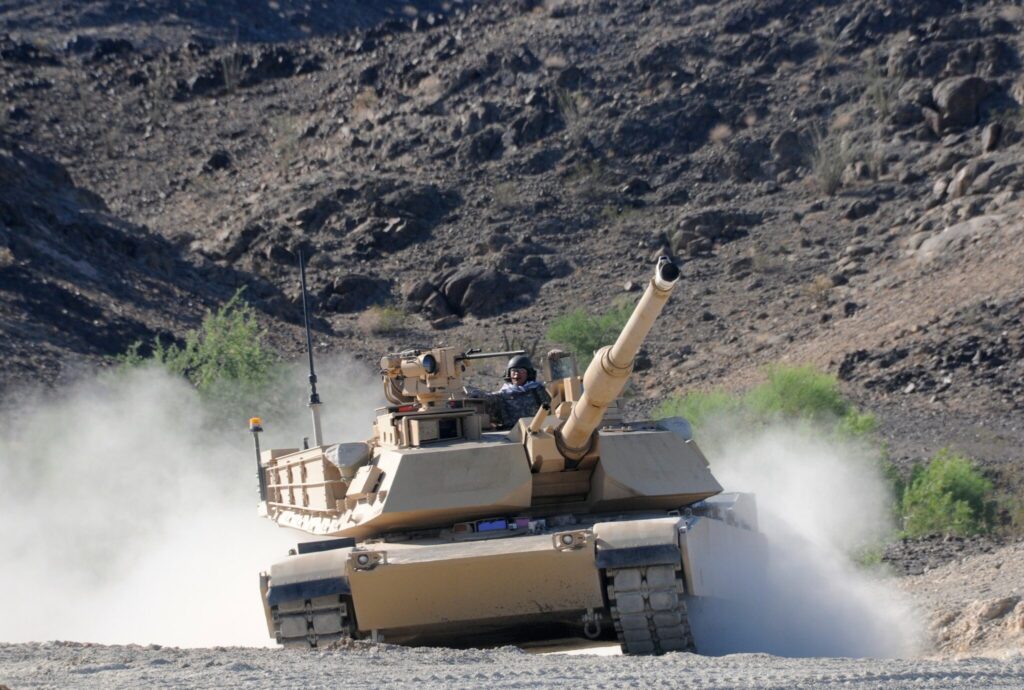
The ammunition for the main gun is kept in the blow-out panels on the turret bustle. The inside is covered with a Kevlar liner to protect it from spalling. Explosive reactive armour blocks can be added to the M1A2 Abrams tank. Some M1A2 tanks have devices that can find and stop laser-guided missiles from going where they are supposed to.
The vehicle is armed with the M256 120 mm smoothbore gun, which was first made by Rheinmetall and is now made in the USA under licence. This gun has to be loaded by hand. Some other tanks have autoloaders, but this system is more reliable.
The M1A2’s fire control system and its parts are better. Effective fire range is more than 4 km. The M1A2 has a “hunter-killer” target acquisition system. Many tanks made in the early 1990s don’t have this feature.
The secondary weapons are a coaxial 7.62 mm machine gun, another 7.62 mm machine gun mounted over the gunner’s hatch, and a 12.7 mm machine gun mounted over the commander’s hatch.
There are four people on the vehicle’s crew: the commander, the gunner, the loader, and the driver.
The Avco Lycoming AGT1500 gas turbine engine, which is now made by Honeywell, gives the M1A2 Abrams its 1,500 horsepower.
It is basically a helicopter engine that has been changed to work on tanks. It has a motor that can run on any grade of gasoline, diesel, aviation fuel, or kerosene. This engine runs very well and is small for how much power it has. So, despite being big and heavy, the Abrams tank is surprisingly quick. It moves faster than a lot of other tanks and is better at going across land.
| Country of origin | United State |
| Entered service | 1992 |
| Crow | 4 men |
| Dimensions and weight | |
| Weight | 62.5 t |
| Length (gun forward) | 9.83 m |
| Hull length | 7.92 m |
| Width | 3.48 m |
| Height | 2.44 m |
| Armament | |
| Main gun | 128 mm smoothbore |
| Machine guns | 1 000 x 12.7 mm, 12 400 x 7.62 mm |
| Elevation range | -9 to + 20 degrees |
| Traverse range | 360 degrees |
| Ammunition load | |
| Main gun | 40 rounds |
| Machine guns | 1 000 x 12.7 mm, 12 400 x 7.62 mm |
| Mobility | |
| Engine | Honeywell AGT 1500 gas turbine |
| Engine power | 1 500 hp |
| Maximum road speed | 67 km/h |
| Range | 425 km |
| Maneuverability | |
| Gradient | 60% |
| Side slope | 40% |
| Vertical step | 1 m |
| Trench | 2.7 m |
| Fording | 1.2 m |
| Fording (with preparation) | 2 m |
The engine is also surprisingly quiet. Because of this, the Abrams is sometimes called the “Whispering Death.” Its gas turbine engine doesn’t need to be serviced as often as diesel engines do. However, it is hard to keep up with and uses a lot more fuel than diesel engines. The engine can be changed out in the field in 30 minutes.
This main battle tank can be moved by air using either a C-5 Galaxy or a C-17 Globemaster III.
Variants
System Enhancement Program (SEP) version of the M1A2 SEP. It takes the place of the M1A2. It has better armour protection, better system parts, better computer parts, and a few other changes.
The SEPv2 (version 2) has a weapon station that can be controlled from a distance and is armed with a 12.7 mm machine gun. In 1999, the US Army got its first M1A2 SEP tank. At least 900 M1A2 SEP tanks are currently in use. 240 of them were built from scratch. The M1, M1A1, and M1A2 tanks were changed to meet this standard.
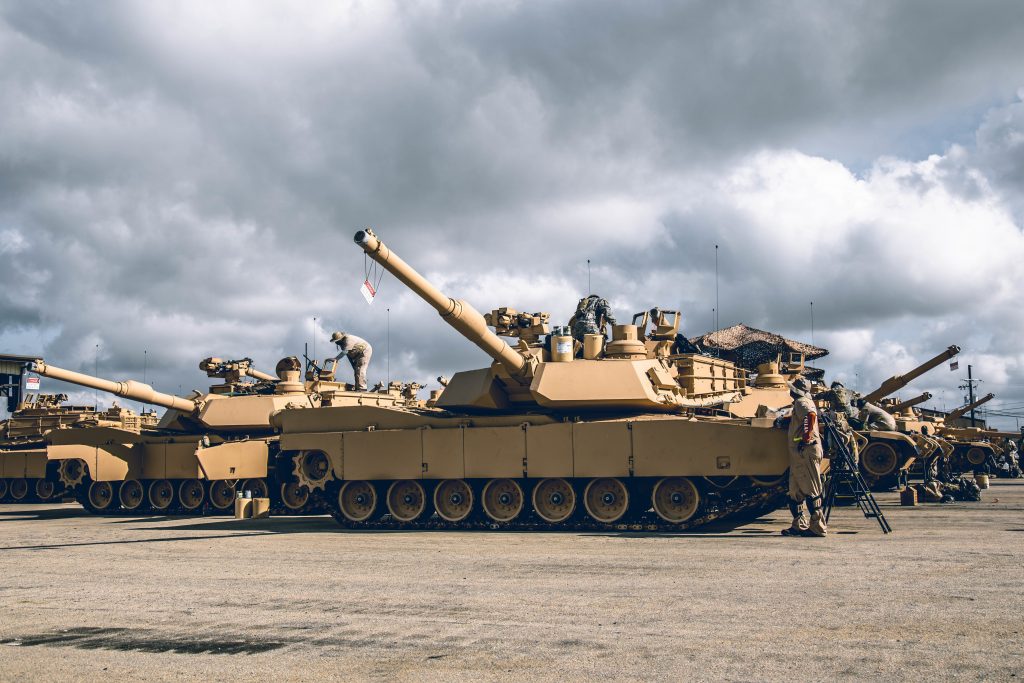
M1A2T is a version that can be exported to Taiwan. A number of these MBTs were ordered by Taiwan. In 2022, the first two M1A2T tanks were sent to Taiwan.
The Tank Urban Survival Kit (TUSK) was made for the Abrams series of tanks to help them do better in cities. Once the kit is installed, the tank’s protection, firepower, and awareness of its surroundings are all better. The TUSK can be used on the battlefield by the units.
DESCRIPTION
The Abrams Main Battle Tank closes with and destroys the enemy using mobility, firepower, and shock effect. The Abrams is a full-tracked, low-profile, land combat assault weapon enabling expeditionary Warfighters to dominate their adversaries through lethal firepower, unparalleled survivability, and audacious maneuver.
The Abrams tank sends a message to those who would oppose the United States as to the resolve, capability, and might of the U.S. Army. A 1,500-horsepower turbine engine, 120 mm main gun and special armor make the Abrams tank particularly lethal against heavy armor forces.
The Abrams program is a mature, Acquisition Category IC program. Design decision authority is delegated to Program Executive Office Ground Combat Systems, further empowering leaders at the lowest level to execute. This creates great Acquisition agility and enables quick reactions to the Army’s requirements while focusing on the real-time needs of the warfighting formations.
M1A1 Situational Awareness (SA): Currently in Sustainment and slated for divestment by Fiscal Year (FY) 2025, this variant has a single second-generation Forward-Looking Infrared (FLIR) sight and analog architecture. The M1A1 SA is as survivable and maneuverable as the more modern variants with upgrades such as powertrain improvements and a Blue Force Tracker – a digital command-and-control system that gives commanders information about their location relative to friendly forces.
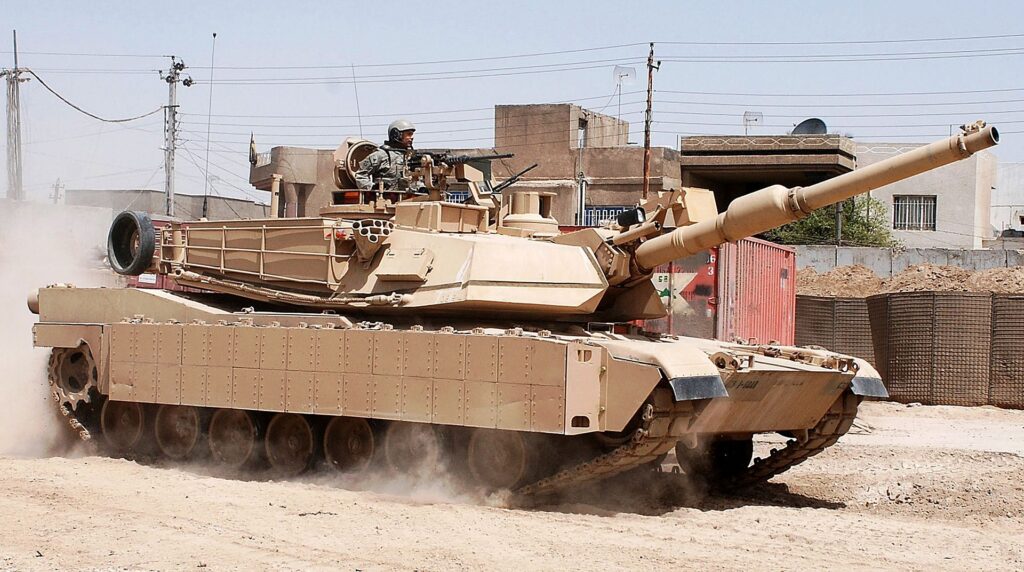
M1A2 System Enhancement Package version 2 (SEPv2): The M1A2 SEPv2 brings the Abrams fleet into the modern era by upgrading the platform to digital architecture.
M1A2 SEPv2 tanks have two sights, a gunner’s and commander’s sight, which increase the tank’s lethality by enabling a hunter/killer technique – as the gunner destroys targets, the commander can simultaneously survey the battlefield for the next threat. To strengthen and continue the Abrams battlefield overmatch, the M1A2 is the first variant to integrate a Non-Developmental Item Active Protection System (APS)-Trophy.
Other incremental upgrades through Modification Work Orders include a Common Remotely Operated Weapon Station-Low Profile, an Ammunition Data Link to fire improved smart rounds, and increased battery storage.
M1A2 SEP version 3 (SEPv3): The current production version of the Abrams tank is scheduled for First Unit Equipped in FY 2020. This version rectifies many of the space, weight, and power issues identified during Operation Iraqi Freedom and will be the foundational variant for all future incremental upgrades.
In addition to having improved survivability, the Abrams M1A2 SEPv3 can host any mature technology the Army deems operationally relevant. Improvements focus on increasing the electrical power margin, Vehicle Health Management Systems, integrated counter-improvised explosive device protection, a new Auxiliary Power Unit enabling silent watch, embedded training, and an Ammunition Data Link.
It is the most reliable Abrams tank ever produced, minimizes the Army’s logistic footprint, and leads the Army in enterprise-level connectivity to maintenance and supply systems.
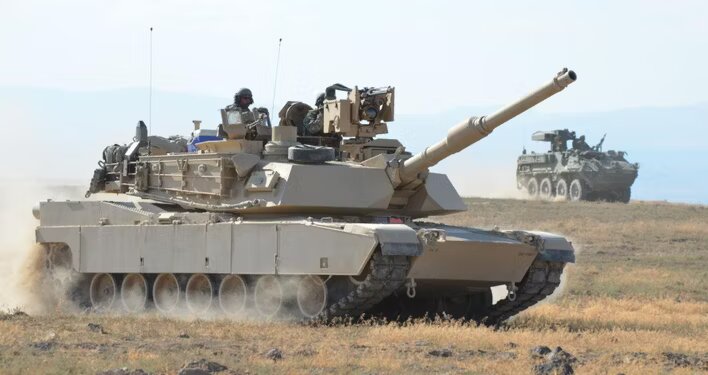
M1A2 SEP version 4 (SEPv4): The most lethal Abrams tank is now in development, featuring the third generation (3GEN) FLIR the cornerstone technology that will provide tank crews the ability to identify enemy targets farther than ever before.
The 3GEN FLIR will be an upgrade to both sights and will be common with other combat platforms. With the upgrade, the Abrams will integrate a color camera, Eye-safe Laser Range Finder, and a cross-platform laser pointer to facilitate multi-domain battle into the commander’s sight.
In addition to a lethality upgrade, the M1A2 SEPv4 will include full-embedded training to maximize crew proficiency of the system. This program began early enough to onboard any technology the Army deems critical to the future battlefield to include artificial intelligence, autonomy, APS, or advanced sensors.
BENEFIT TO THE SOLDIER
Provides the lethality, survivability, and fightability necessary to defeat advanced threats well into the future. The Abrams tank is the Army’s primary ground combat system.
SPECIFICATIONS
- Combat weight (tons): M1A1 SA – 67.6; M1A2 SEPv2 – 71.2; M1A2 SEPv3 – 73.6
- Speed: 42 mph, 30 mph x-country
- M1A1 SA: 120 mm/40 rounds
- M1A2 SEPv2: 120 mm/42 rounds
- Machine guns: .50 caliber – 900 rounds; 7.62 mm – 11,400 rounds
PROGRAM STATUS
FY18:
– Start of M1A2 SEPv3 Production
– Start of M1A2 SEPv4 Development program
FY20:
– M1A2 SEPv3 First Unit Equipped
– First Brigade APS-Trophy delivery
PROJECTED ACTIVITIES
FY19-FY23: M1A2 SEPv4 Development program continues


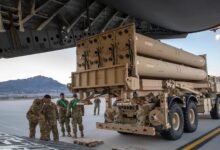



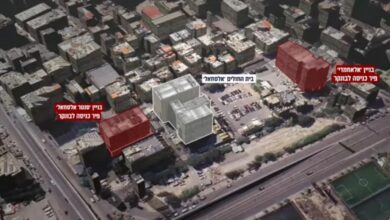
Facebook Comments